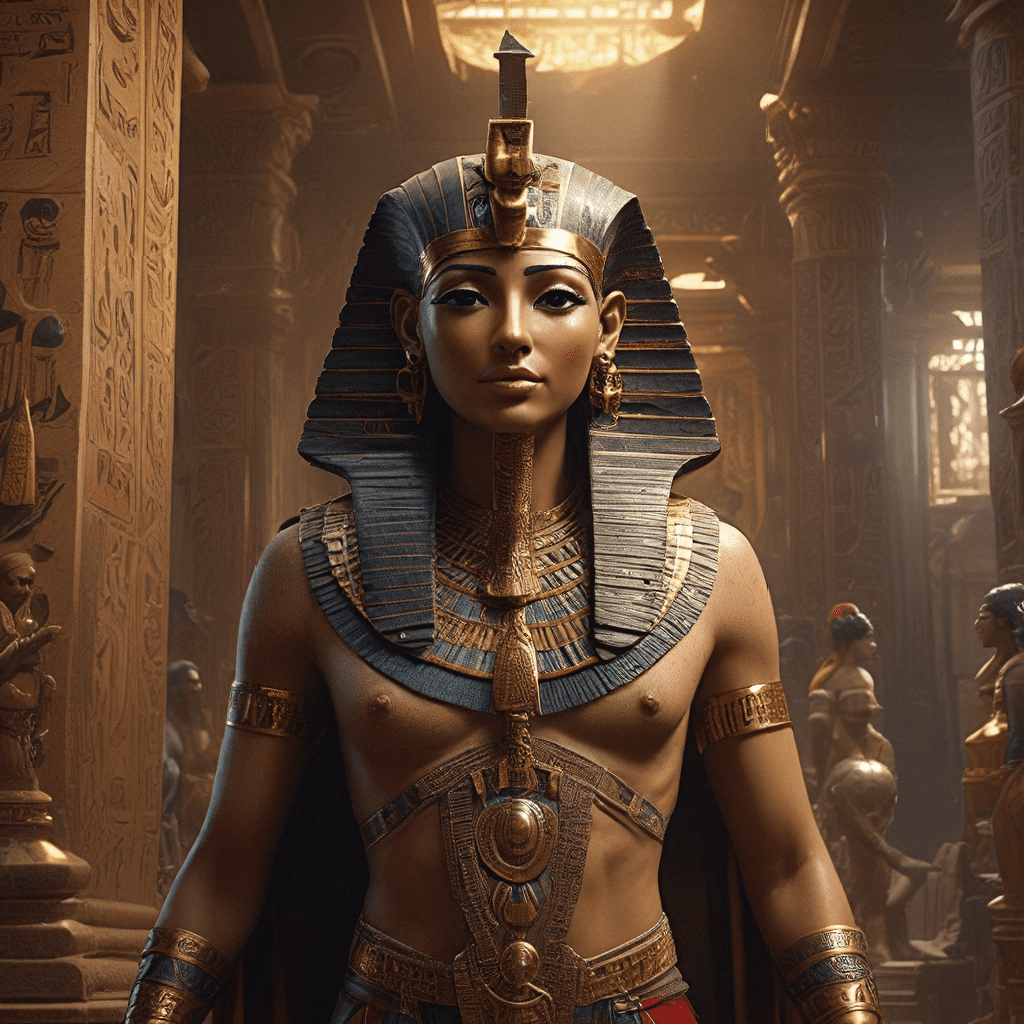Guardians of the Past: The Narrative Power of Egyptian Artifacts
I. Introduction
Ancient Egypt, a civilization renowned for its magnificent pyramids, intricate hieroglyphs, and captivating mythology, continues to enthrall people worldwide. The allure of this ancient culture lies in its enduring legacy, preserved through the countless artifacts that have survived the sands of time. These objects are not mere relics of the past; they are powerful storytellers, whispering secrets of a civilization that flourished thousands of years ago.
Egyptian mythology, with its pantheon of gods and goddesses, its intricate tales of creation and the afterlife, forms the backbone of this storytelling. From the sun god Ra to the goddess Isis, these divine figures are woven into the fabric of Egyptian life and beliefs. Artifacts, ranging from monumental statues to delicate jewelry, serve as tangible links to this rich mythological world, allowing us to glimpse into the minds and hearts of the ancient Egyptians.
II. The Power of Materiality
The materiality of Egyptian artifacts is fundamental to their narrative power. Every object, meticulously crafted from materials like gold, stone, and papyrus, reflects the cultural and religious values of the ancient Egyptians. The gleaming gold of a pharaoh’s mask, the majestic grandeur of a granite statue, and the delicate brushstrokes of a tomb painting each convey a unique story.
Gold, symbolic of the sun god Ra’s power and immortality, was extensively used in royal adornments and funerary objects. Stone, a durable and enduring material, was used to create magnificent temples and statues, showcasing the Egyptians’ reverence for their gods and their belief in the afterlife. Papyrus, a readily available plant, served as a medium for recording stories, myths, and religious texts, preserving the knowledge and wisdom of ancient Egypt for generations to come.
III. Narratives Embedded in Objects
Egyptian artifacts are not merely inert objects; they are repositories of stories, carrying within them the echoes of ancient voices. Every detail on a tomb painting, every inscription on a sarcophagus, every image on a papyrus scroll reveals a piece of the narrative mosaic that defines ancient Egyptian civilization.
Examine the iconography of a temple relief, and you’ll witness scenes of daily life, rituals, and myths. The intricate hieroglyphs reveal the names of pharaohs, gods, and goddesses, allowing us to trace historical events and understand the religious beliefs of the time. The symbolism embedded in these artifacts – the ankh, representing life, the scarab beetle, symbolizing resurrection, the eye of Horus, signifying protection – provides insights into the complex spiritual world of ancient Egypt.
IV. The Royal Collection: Power and Divinity
The artifacts associated with pharaohs, the divine rulers of Egypt, hold particularly potent narratives. Their regal attire, their magnificent tombs, and their symbolic objects speak volumes about their power, authority, and connection to the divine.
Royal regalia, like the double crown of Upper and Lower Egypt, the scepter symbolizing authority, and the pectoral adorned with precious stones, served as more than just adornments; they were powerful symbols of the pharaoh’s divine mandate. The grandeur of royal tombs, filled with treasures, food offerings, and elaborate burial rituals, reflected the pharaoh’s belief in the afterlife and their desire to ensure a smooth transition into the next realm. These objects, meticulously crafted and meticulously placed, served as a testament to the pharaoh’s power and their role as intermediaries between the human realm and the divine.
V. The Gods and Goddesses: Iconographic Representations
Egyptian mythology is a complex tapestry woven with a diverse pantheon of gods and goddesses. These divine figures embody various aspects of nature, human emotions, and the forces that govern the cosmos. Artifacts offer a visual language for understanding these deities and their roles in the Egyptian worldview.
Each god and goddess has specific attributes and symbols that distinguish them. The sun god Ra is often depicted with the sun disk atop his head, while the goddess Isis is often seen wearing the cow horns and sun disk of Hathor, signifying motherhood and protection. The god Anubis, the jackal-headed god of the dead, is associated with mummification and the afterlife. These iconic representations, found on statues, amulets, and tomb paintings, provide visual clues to the nature and power of each deity.
VI. The Afterlife: Navigating the Underworld
The concept of the afterlife held profound importance for ancient Egyptians. They believed that after death, the soul embarked on a perilous journey through the underworld, facing trials and judgments before reaching the Field of Reeds, a blissful paradise. Artifacts provide a glimpse into this belief system and the rituals designed to facilitate a successful transition into the afterlife.
Tombs were meticulously prepared to serve as the deceased’s eternal abode. They were filled with amulets, meant to protect the soul, shabti figures, designed to perform tasks for the deceased in the afterlife, and scrolls containing the Book of the Dead, a guide for navigating the underworld. These objects, imbued with magic and symbolism, demonstrate the Egyptians’ profound belief in the afterlife and their desire to ensure a peaceful and prosperous existence for the deceased in the next world.
The narratives embedded in Egyptian artifacts offer a window into a civilization that is both familiar and alien to us today. They speak of gods and goddesses, rituals and beliefs, power and the afterlife. They remind us that even though millennia have passed, the stories of ancient Egypt still hold the power to inspire, captivate, and illuminate our understanding of the human experience.




